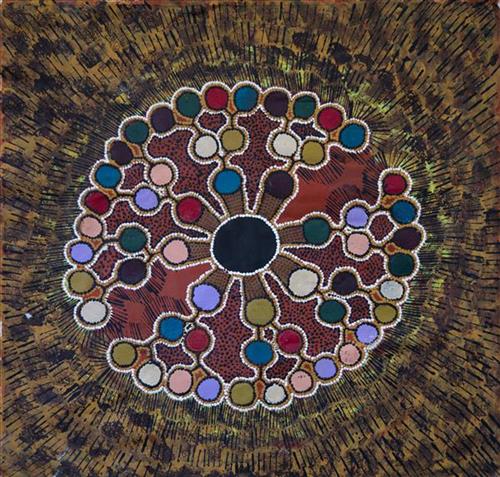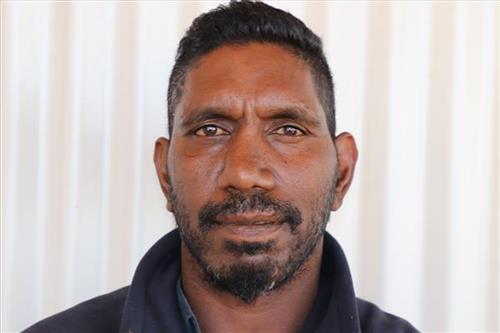111582374105
Jirntulurru Ngumpulurru (Martu Kinship)
“The four skin groups that govern Martu social structures around marriage and lore are Jangala, Karimarra, Purungu and Milangka. [For example] Anya [Judith Anya Samson, Martumili artist] is Milangka, I am Karimarra skin. Within each skin grouping there is a male and female, and then only one other grouping with which each of these are ‘right skin way’ for marriage.
It is simple but complex all in one- I have tried to explain by writing it all but now I am also trying to explain by painting. Using colour coding I thought might help to expain.
You can see here there are eight colours which represent the eight different skins (four female and four male) and then the skin groupings of offspring as the circle moves out. So the centre is the Lore and around this is the first grouping; us now, or our ancestors, depending on your perspective.
Each pairing, within the first circle, includes the male and femaie of each skin group. For example- it’s red for male and blue for female in the Milangka skin group.
The cycle moves through from grandparent to grandchild, and then back around to grandparent again. So a child can be an elders grandmother as can an elder be a child’s child.”
– Clifton Girgiba, 2025
Martu kinship systems governed, and still goven social structures and Lore throughour the area and the knowledge is passed through generations as common knowledge.
In the heart of central Western Australia, the Martu people are the traditional owners of a vast landscape stretching from the Great Sandy Desert in the north to Wiluna in the south. Across this Country, their lives are bound by a common ancestral heritage, law, and culture. To one another, they are walytja (family).
This Martu term for family, walytja, encapsulates a broader idea of relatedness that permeates every aspect of life. The Martu four-section kinship system determines a person as belonging to either the Purungu, Milangka, Panaka/Jangala or Karrimarra skin group, and was created by the Jukurrpa (Dreaming) ancestors.
This system not only defines relationships, it also establishes a framework for expectations and obligations, and extends the importance of family far beyond mere blood or marriage ties. Family is not limited to blood connections; it encompasses all relationships within the entire community, forming a network of relationships that was crucial to survival during the pujiman (traditional, desert dwelling) era, and that remains fundamental to Martu life today. The kinship system allows everyone to know what expectations one person can have in relation to another, and means that familial terms and relationships are present between any two individuals, whether or not they are related by blood.




